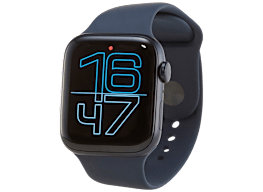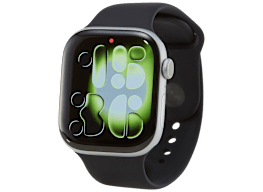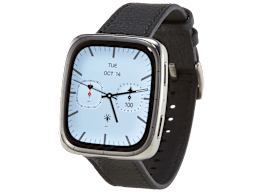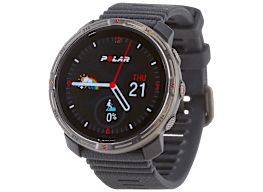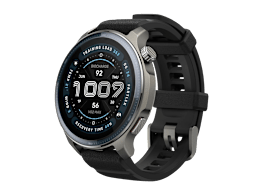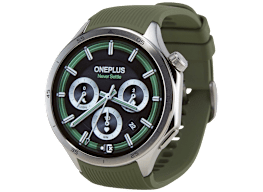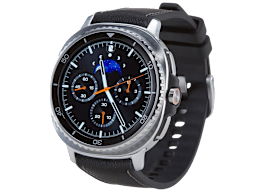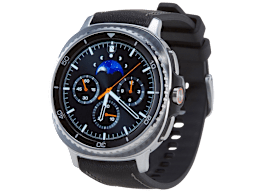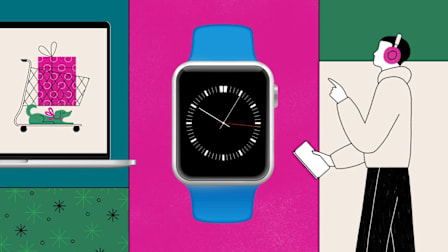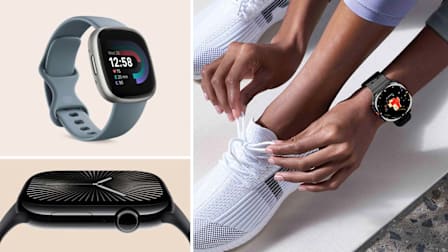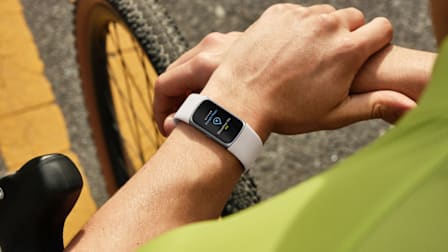Which Apple Watch Should You Buy?
CR rates new and older models to help you choose the best option
When you shop through retailer links on our site, we may earn affiliate commissions. 100% of the fees we collect are used to support our nonprofit mission. Learn more.
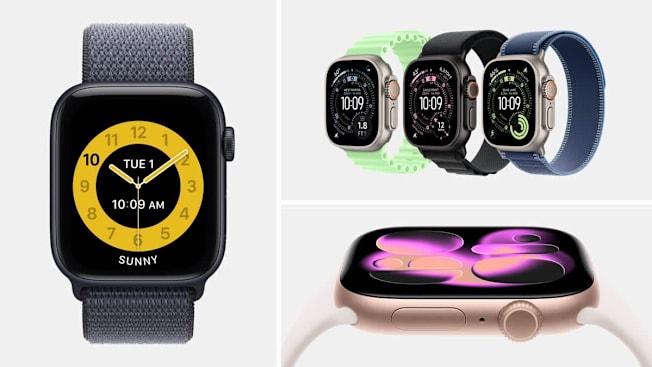
Whether you’re looking to accurately track your morning runs or respond faster to texts, the Apple Watch is a solid choice. All of Apple’s models perform well in our tests. They make routine tasks—like changing a song while listening to music or paying for your morning coffee—easier. Think of them as a seamless extension of your iPhone or MacBook.
The question is which one to buy: the top-of-the-line Ultra 3, the latest Series 11, the lower-cost third-generation SE, or an older model.
The Apple Watch Ultra line is aimed at adventurers—and those who’d like to look like one. It has a thick titanium body, a large bright display, and a number of premium health and safety features that might be useful, even if you’re not venturing off into the backcountry.
Apple Watch Ultra 3 ($799 and up)
The $799 Apple Watch Ultra 3 is aimed at serious athletes and outdoorsy types. The beefier crown and large buttons on the sides allow menu-free access to your most used functions. Unlike other models, the Watch Ultra 3 comes in only one display size, 49 mm.
The display is brighter than the one on the Series 11, Apple says, which helps with readability in low or bright light. It’s also the largest Apple Watch, which may be a negative for someone with a petite wrist or a desire for a more subtle everyday look.
Some of the premium features seem particularly useful for a regular adventurer, like new Emergency SOS via satellite connection, the ability to set off an 86-decibel siren should you need help, or the ability to function as a full-fledged dive computer via an app from Oceanic+. Apple says the Ultra 3 is now capable of alerting you to chronically high blood pressure, too, a new feature also available with the Series 11 Watch.
The Ultra 3 performs very well in our labs, earning top scores for ease of use, scratch and water resistance, and build quality. The model also earns the highest scores for the versatility of its features generally and the accuracy of its fitness features. In particular, its heart rate monitoring proved very accurate in our labs. The Ultra 3 also manages to run an impressive 78 hours on a single charge. That’s just as long as the previous Ultra 2 as well as the less pricey Apple Watch SE 3.
But overall, the major appeal of the $799 Ultra 3 (compared with a $399 Series 11 or $249 third-gen SE) is the way it looks and feels on your wrist, the brighter display, and the handful of additional health and fitness features. But whether your lifestyle actually requires additional functionality and top-tier performance is your call.
Apple Watch Series 11 ($399 and up)
The classic Apple Watch Series 11, which starts at $399 for the basic Bluetooth-only version, is the pick for anyone who wants the latest health and fitness features without the added bells and whistles (or bulky design) of the Ultra 3.
The Series 11 case is offered in 46-mm and 42-mm sizes, like the one on the previous Series 10 model. You can opt for an aluminum case or a premium-priced titanium case, both in a few different colors. The watch is significantly thinner and lighter than the Ultra 3, making it potentially more comfortable to wear all day, including to bed. CR’s testers also rate the quality of its build as excellent, so the watch should hold up well to daily wear and tear.
No matter the size or display type you choose, expect a top-tier smartwatch equipped with all the important functionality that matters to a typical smartwatch user, like sleep tracking, heart rate monitoring, and tap-to-pay.
The Series 11 comes equipped with the S10 chip and lasts an impressive 73 hours on a single charge, our testers have found, 27 hours longer than the Series 10 delivered.
As with the Ultra line, the health tracking is robust. Notably, the Series 11 can now alert you to chronically high blood pressure, according to Apple, a feature new to this model. It also has body temperature sensors for more accurate cycle tracking and retrospective estimates of ovulation, a high-g-force sensor for car crash detection, and ECG functionality to detect unusual heart rhythms.
In CR’s independent testing, the Series 11’s fitness features proved particularly accurate, including its step tracking and heart rate monitoring.
For even more robust sleep health analysis, the Series 11 comes with sleep apnea detection through the monitoring of nightly breathing disturbances, as well as the holistic Sleep Score as part of the WatchOS 26 update.
Overall, you can expect the Series 11 to do everything a high-performing smartwatch does, although you’ll lose a few of the specialized features and a few hours of additional battery life available on the Ultra line.
Apple Watch SE ($249 and up)
The budget Apple Watch SE is now in its third generation. Starting at $249, the lowest tier in Apple’s smartwatch lineup, it still provides all the essentials (and many of the nice-to-have features) that most smartwatch users want. It also boasts a particularly impressive 78-hour battery life, according to our in-lab testing.
The SE supports fall detection, family setup, and Emergency SOS, which lets you call for help and alert preselected contacts, and international emergency calling, useful if you run into trouble overseas. It also has tap-to-pay functionality, on-device GPS, and automatic workout detection.
What are you giving up? A few health and safety features, like the new hypertension monitoring available on the Series 11 and Ultra 3. You’ll also lose a bit of display size and brightness, Apple says. In our lab tests, the third-gen SE ranks below the Ultra 3 and Series 11 watches, but just barely.
Apple Watch Series 10
The Series 10 is no longer officially listed in Apple’s lineup or sold directly in Apple stores, but you can still find it on sale at certain retailers, often refurbished, and it could be an appealing option if the price is right. Listed as low as $300 by certain retailers, it’s a more than reasonable alternative to the Series 11 or even the lower-priced SE.
This model is light and thin, with a bright, high-quality display. It has a wide variety of health, fitness, and safety features, including an ECG function designed to detect unusual heart rhythms and sleep apnea detection. Of course, it also offers the basics most of us are looking for in a smartwatch, like sleep tracking, heart rate monitoring, and workout logging.
Other Factors to Consider
Do you need cellular? All Apple Watch Series and SE models can be purchased with Bluetooth connectivity alone. Adding cellular capacity raises the sticker price by about $100, plus the roughly $10-per-month fee for a wireless plan. The Ultra models can only be purchased with cellular capacity, but you don’t have to activate it.
Most people probably don’t need a watch with cellular. If you’re a runner and you want to leave your phone at home but want to be reachable for calls and texts, the cellular option is a sensible upgrade. It might also be useful to anyone who depends on the fall-protection features, which would otherwise require keeping a smartphone within range.
But many users are rarely out of Bluetooth range of their smartphones, which makes a cellular watch redundant.
Is bigger better? Regardless of which model you consider, anyone with smaller wrists will probably gravitate toward the smaller sizes. While men tend to buy the bigger size (which costs a little more), many find the smaller watch to be just right.
Fancy finishes: The starting prices listed in this article are for the basic aluminum finish. But on the Series 11, you can level up with a more premium slate, gold, or natural titanium finish, though you’re likely to see little functional difference. Apple also offers top-of-the-line Hermès designs with fashion-forward straps and hefty prices.
Beyond the Apple Watch: Yes, Apple’s smartwatches are great, especially if you own an iPhone or other Apple devices, but we also recommend models made by companies like Google, Fitbit, and Samsung. As always, Consumer Reports members can consult our smartwatch and fitness tracker ratings for full test results on more than 50 models.



















